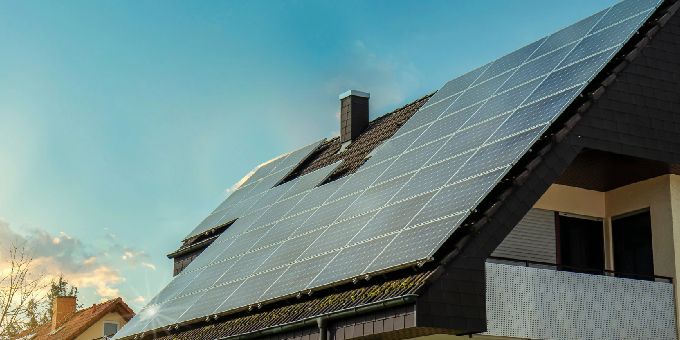As more and more households switch to renewable energy sources, rooftop solar installations have become a popular option. Not only do they provide an eco-friendly and cost-effective solution to traditional electricity sources, they also add value to your property. But when it comes to designing a rooftop solar project, many homeowners prioritize function over form. However, with some careful planning and design considerations, your solar panels can enhance your home’s aesthetic and add to its overall curb appeal. In this blog post, we’ll discuss some expert tips for designing a rooftop solar installation that goes beyond mere function to create a visually stunning addition to your home. We’ll explore options for panel placement, innovative designs, and advanced technologies that complement the architecture of your home, all while improving the performance and efficiency of your solar system. If you are interested in designing an attractive rooftop solar installation, you may find some useful tips at https://www.urdesignmag.com/tips/2023/03/31/how-to-design-an-attractive-rooftop-solar-installation/.
- Choose a Color Palette That Compliments Your Home
When it comes to designing a rooftop solar installation that enhances your home’s aesthetic, there are more factors to consider beyond just function. One of these important factors is the color palette of the solar panels you choose. Today, solar panels are available in a wide range of colors and finishes, allowing you to select a palette that blends seamlessly with your home’s overall design aesthetic. By choosing a color palette that compliments your home, you can create a sleek and cohesive look that showcases your home’s beauty while also benefiting from the energy savings provided by your solar installation. Be sure to consider the color of your roof, exterior walls, and any other design elements before making your final decision.
- Consider the Shapes of Panels and Arrangements
When designing a rooftop solar installation, it is important to consider not only its function but also its aesthetic appeal. One key element to consider when enhancing the visual appeal of your solar panels is their shape and arrangement. The traditional rectangular shape is not your only option; consider panels with sleeker designs or even circular shapes. Additionally, explore arrangements beyond the traditional horizontal or vertical placement, such as diagonal or patterned layouts. These choices enhance the visual interest of your solar installation while still providing the energy output you require. Be sure to work with a qualified solar installer who can guide you through the design process and help you make choices that suit both your aesthetic preferences and energy needs.
- Utilize Textures and Materials to Blend In
One strategy to elevate the aesthetic of a rooftop solar installation is to make use of textures and materials to blend in with the overall design of your house. Choosing materials and textures that complement the style of your home can create a cohesive look that enhances your property’s overall aesthetic. For example, if your home has a modern and minimalist design, consider flat solar panels with a matte finish that can blend in rather than stand out. Alternatively, if your home has a more traditional aesthetic, choose roof-integrated solar panels that match the color and texture of your roofing materials. Utilizing textures and materials that complement the overall design of your home results in a visually appealing solar installation that seamlessly integrates into the environment.
- Incorporate Plants and Shrubs
Incorporating plants and shrubs can greatly enhance the aesthetic appeal of your rooftop solar installation, creating a more natural and inviting environment. Carefully selecting and placing greenery on your rooftop can also provide valuable shading for your solar panels, helping to increase their efficiency and prolong their lifespan. When choosing plants and shrubs for your installation, it’s important to consider the amount of sunlight and wind exposure your rooftop receives, along with the soil and drainage conditions. Opting for drought-resistant plants and native species can help reduce maintenance needs and improve overall sustainability. By taking the time to thoughtfully incorporate plants and shrubs into your rooftop solar design, you can create a beautiful and functional space that seamlessly integrates into your home’s exterior.
- Integrate Lighting for Added Interest
Adding lighting to a rooftop solar installation is an excellent way to enhance the aesthetic appeal of your home. In addition to adding visual interest, lighting adds additional safety and security to your property. By highlighting the unique features of your installation, you can create a visually stunning focal point that will undoubtedly impress your guests. One popular lighting solution for rooftop solar installations is the use of decorative fixtures such as recessed lights or string lights. The fixtures should be strategically placed and designed to complement the overall look and feel of your outdoor space. You also have the option to incorporate smart lighting technology, which allows you to control your lights from a mobile device or voice command. With the variety of lighting options available today, you can easily incorporate lighting into your rooftop solar installation design to create an inviting and beautiful space.
To sum up, incorporating solar panels into the design of your home’s exterior requires careful consideration of their visual impact, as well as their functionality. With the right placement, orientation, and installation technique, you can create an array that not only generates clean energy but also enhances the aesthetic appeal of your home. By following the tips discussed in this post, you can ensure that your rooftop solar installation becomes a design feature that boosts your home’s curb appeal and helps you make a positive impact on the environment.




